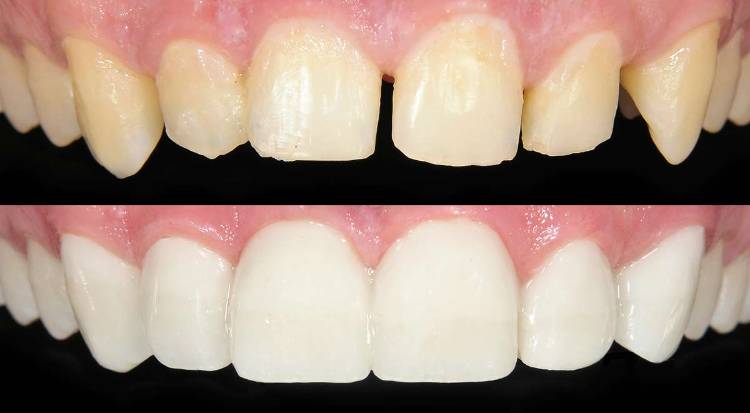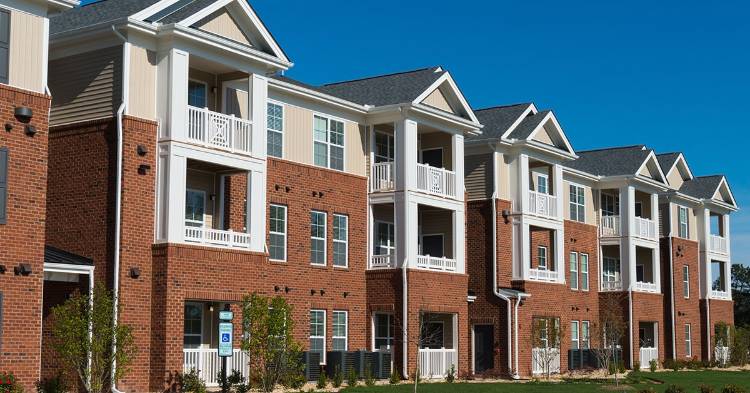
Severe storms, winds, or other catastrophes can damage your roof. However, home insurance typically replaces only the damaged roof and leaves the rest. If you want to get the full cost covered, you may want to learn how to negotiate roof replacement with insurance.
As you might have known, insurance companies are profit-oriented, which means they make a profit in many ways. Negotiating with your insurer can be intricate but there is always a chance of approval for a total roof replacement.
How to Negotiate Roof Replacement
Your ability to negotiate with your insurance company plays a key role in determining whether or not the insurer pays for a new roof. Here, you will find the steps to make sure your insurance claim is approved.
Understand Your Insurance Policy

Before starting a negotiation with your insurance, it becomes crucial to understand and review your policy. The policy states what your insurance covers and what is not. Reviewing the policy helps you see if you have a right to claim for a full roof replacement.
Your insurance paperwork comes with either replace cost value or actual cash value policies. Both policies refer to a payout but in different amounts. The actual cash value policy, also known as ACV, only gives you the depreciated value of the roof, which means it will not cover a full roof replacement.
On the other hand, the replacement cost value policy covers the total costs of replacing your roof. At first, you will receive a check for the ACV while the insurer works with recoverable depreciation. After the task is completed, you will receive the second check that covers the rest of the costs.
However, the insurer only pays out for the same roof before the damage. In case you want upgrades, you will have to pay the difference.
Deal with Roof Damage

The next step in how to negotiate roof replacement with insurance is dealing with your roof damages. All insurance companies require clear evidence when you file a claim and getting photo documentation is the best way to provide rock solid proof.
Contact a roofing contractor to help you document the roof damages. They will mark any damaged area to make it easier to see as well as provide clear reference points for your insurer. After creating marks on the damaged roof, your roofing contractor will take pictures so you can submit them to the insurer.
Not only do they mark roof damages, but they also inspect possible signs of damage on the ground, such as holes in window screens, dents on your property caused by storms, or broken downspouts. Although it does not guarantee your claim is approved, it gives you a better chance for approval.
Find Alternatives If Your Claim Is Denied

Now that you have reviewed your insurance policy and have evidence, the next step is to file a claim. No one can assure you that your claim will be approved, so you may need to prepare alternatives if your claim is denied.
Having your request rejected is the beginning of the negotiation process. Before contacting the insurance directly, you can figure out the reason behind the rejection. The most common reasons an insurer denies a claim include improper installation, being late to file a claim and inadequate ventilation.
In case your claim is rejected because the insurance company cannot find damage, you can ask the insurer to find a second opinion from a different adjuster. If the adjuster still cannot find the roof damage but you insist on fighting for it, you can find a structural engineer.
A structural engineer will inspect your roof and provide more evidence that your roof needs a replacement. But if this negotiation does not work, you will accept the rejection or complain to the Commissioner of Insurance.
This is the last resort when nothing works. Before filing a complaint to the Commissioner of Insurance, be sure your roof is actually damaged due to storms or catastrophes.
Supplement Your Roof Insurance Claim

Supplementing an insurance claim refers to performing the due diligence to make sure everything is covered in the estimate. This is the next step in how to negotiate roof replacement with insurance when your claim is approved by the insurer.
After your roof replacement claim is approved, you will receive an estimate for the required scope of replacement work. However, most adjusters often miss key line items on the estimate. Some adjusters even leave line items that are required to make sure your roof complies with the building codes.
When you supplement an insurance claim, you put everything together in the estimates so it can be covered by the insurance. This may include but is not limited to line item, labor, overhead, and dump fees. A credible roofing contractor will help you get the task done but every company is different.
Please keep in mind that some insurers may push back on supplementing. But if you have a replacement cost value policy, you have a right to get everything covered including labor, overhead, and many more.
Use the ITEL Process

Your insurance may approve your claim but there is always a chance they only offer partial repair instead of a full roof replacement. If you experience this unwanted event, you can either accept what it offers or fight for your right, especially if your policy states a replacement cost value.
Some states have matching laws that you can utilize to fight against your insurer. Matching law requires the insurance company to replace the entire roof if there is no shingle that matches your current shingle color. It could be unavailable, discontinued, or out of production.
If the insurer fights back on matching laws, you can use the ITEL process. ITEL will analyze and match materials used in your home, such as roofing, flooring, and siding. In the case of roofing, the ITEL report can be utilized to identify the current shingle manufacturer and color.
You will need to send a shingle sample to the laboratory and wait for the report. The result determines if the same shingle is available for the repair process or if you need a full roof replacement due to matching law.
However, some insurance policies exclude matching laws, which means you cannot fight against them using this method. So, it is important to read your policy including its exclusions before claiming.
Key Negotiation Tips

How to negotiate roof replacement with insurance might be tricky and energy-draining but the result is worth it. No one can assure you that your roof replacement claim will be approved but there are several tips to make your approval chance bigger.
Learn the Claim Process with Your Insurer
Learning how to file a claim with your insurance company is a good start. Each insurer has a different procedure when it comes to the claim process, so it is important to make sure you do it correctly. Begin with calling a licensed roofing contractor to fix the roof temporarily and then notify your insurer.
Ask your roofing contractor to take a picture of any damage. When your evidence is ready, submit a claim with your insurer. Next, an insurance adjuster will inspect your roof and your claim will be processed based on your policy before they come up with an offer.
With your roofing contractor, submit the estimate for approval. Once the repair or replacement has been completed, the insurance will pay the contractor on your behalf or they send you a payout. Your insurance company may require different steps, so be sure to verify with an expert.
Meet the Required Deadlines
No matter how strong your proof is, your claim will be denied if you file it too late. To avoid such ridiculous mistakes, be sure you meet the deadlines to file the request. Most insurance companies require you to claim within one year after the damage occurred.
If you want to play safe, ask your insurance agent about when you should file a claim and the deadline to get coverage. It is also recommended to call your insurer promptly after the disaster damages your roof.
Be Aware of Your Policy
When you learn how to negotiate roof replacement with insurance, you will be encouraged to be aware of your policy. This is because an insurance policy contains what is covered and not covered, so you can find out if you have a right to specific coverage.
Most insurance companies provide coverage for catastrophes like storms, hail damage, falling debris, and so forth. However, there are some situations that will not be claimed, such as specific natural disasters, wear and tear, mold damage, and damage caused by negligence.
If you do not want to pay out-of-pocket, make sure your case is included in the coverage. One of the most common mistakes of claimants is that they do not read the policy, so they end up getting the claims denied by the insurer.
Get a Licensed Roofing Contractor
Another tip and trick to increase your chance of being approved by the insurance company is to hire a licensed and credible roofing contractor. With their ability to assess the damage and provide a more accurate estimate, it will be your best option to present your claim to the insurer.
So many unlicensed roofers claim to be professional roofing contractors. Be aware of them because most insurance companies do not pay out for unlicensed contractors. Not to mention they may not provide you with quality materials and labor.
How to choose a licensed roofing contractor is actually simple. Start with small research or ask for referrals to compile 3 to 4 roofing contractors you want to hire. Visit the website or contact customer service to ask for their portfolio. You may also read the customer’s review to make the best decision.
Be Careful When Reviewing the Offer
When your claim is accepted, the insurance company will give you the first offer. Be careful when reviewing as most insurance companies’ first offer is less than your expectation. That means it won’t be able to cover the overall work.
Ask your professional roofer to help you review the offer to make sure that you are receiving a good amount of payout to do the replacement project. If your payment is too little, feel free to decline the offer and provide them with an accurate cost.
Utilize your records, professional opinions, inspections, and estimates to ensure the insurer that you deserve more. Even when you find a lacking element needed for the roof, be sure to ask for details before signing. Many insurance companies do this on purpose, so you need to be careful when reviewing.
Get a Second Opinion
How to negotiate roof replacement with insurance so you can get better results? Consider getting a second opinion from roofing contractors. Avoid using only one assessment from a roofer, even if they claim to be professional and licensed. Get at least 3 roofing contractors for thorough inspections.
Consulting with different roofers can give you different opinions because roofing contractors are not the same. They will give you multiple opinions and estimates that can be used when negotiating with the insurance company.
Ask the Right Question
Negotiating with your insurer is not always simple as they try to give you the lowest offer. They have dealt with different types of people, so they have expertise in negotiation. However, that does not mean you can take anything they offer.
Write everything about your room depreciation, assembly, design, material costs, and anything related to building code requirements. It helps you calculate the accurate cost of replacement and repair. Understanding replacement costs and depreciation prevents you from paying out-of-pocket.
You can also ask questions about how the insurer creates the offer or how the adjuster comes up with the number. It makes you more powerful and they will reconsider the offer because you are serious about fighting for your claim. Of course, it will increase the chance of getting the best offer.
Many insurance companies do not cover full roof replacement, instead, they only cover partial repair. But you can learn how to negotiate roof replacement with insurance if your policy says that you have a right to get a replacement.
Also Read:
- Does Homeowners Insurance Cover Slab Leaks?
- Hail Damage Insurance Claim Time Limit: Know Your Rights
- Reasons Insurance Companies Deny Fire Claims















